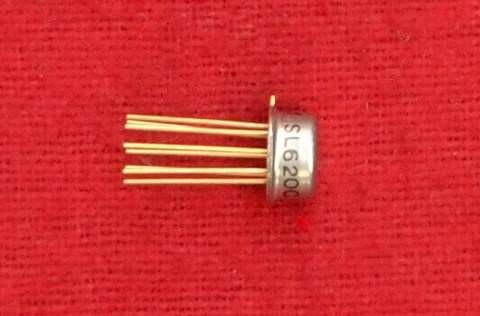SL620 AGG Generator
Features
- All Time Constants Set Externally
- Easy Interfacing
- Compatible with SL630
- Supply Voltage: 6V to 12V
- Supply Current: 3mA
- Operating Temperature: -30°C to +125°C
The SL620C is an audio-operated AGC generator designed for use with the SL630 audio amplifiers in SSB receivers.
An ideal single sideband AGC generator must set the AGC rapidly when a new signal appears and follow a rising or fading signal but, if the signal disappears altogether (as in pauses in speech), retain the AGC level until the signal recommences. If the signal remains absent for more than a preset time, however, the system should rapidly revert to full gain.
Circuit Description
The SL620C consists of an input AF amplifier coupled to a DC output amplifier through a voltage back-off circuit and two detectors having short and long rise and fall time constants respectively.
An audio signal applied to the input rapidly establishes an AGC level in time t1. Meanwhile, the long-time constant detector output will rise and after t3 will control the output because this detector is the more sensitive. If the signals at the SL621C input are greater than approximately 4mV RMS, they will actuate the trigger circuits whose output pulses will provide a discharge current for C2.
By this means the voltage on C2 can decay at a maximum rate which corresponds to a rise in receiver gain of 20dB/sec. Therefore the AGC system will smoothly follow signals which are fading at this rate or slower. However, should the receiver input signals fade faster than this or disappear completely as in pauses in speech, then the input to the AGC generator will drop below the 4mV RMS threshold, and the trigger will cease to operate. As C2 then has no discharge path, it will hold its charge (and hence the output AGC level) at the last attained value. The output of the short time constant detector falls to zero in time t2 after the disappearance of the signal.
The trigger pulses also charge C3. When the pulses cease, C3 discharges and after t5 turns on TR12, rapidly discharging C2 (in time t4) thus restoring full receiver gain. The hold time, t5, is approximately one second with C3=100 µF. If signals reappear during t5, then C3 will recharge, and normal operation will continue. The C3 recharge time is long enough to prevent prolongation of the hold time by noise pulses. Fig. 12 also shows how a noise burst superimposed on speech will initiate rapid AGC action via the short time constant detector while the long-time constant detector effectively remembers the pre-noise AGC level.
An audio signal applied to the input rapidly establishes an AGC level in time t1. Meanwhile, the long-time constant detector output will rise and after t3 will control the output because this detector is the more sensitive. If the signals at the SL621C input are greater than approximately 4mV RMS, they will actuate the trigger circuits whose output pulses will provide a discharge current for C2.
By this means the voltage on C2 can decay at a maximum rate which corresponds to a rise in receiver gain of 20dB/sec. Therefore the AGC system will smoothly follow signals which are fading at this rate or slower. However, should the receiver input signals fade faster than this or disappear completely as in pauses in speech, then the input to the AGC generator will drop below the 4mV RMS threshold, and the trigger will cease to operate. As C2 then has no discharge path, it will hold its charge (and hence the output AGC level) at the last attained value. The output of the short time constant detector falls to zero in time t2 after the disappearance of the signal.
The trigger pulses also charge C3. When the pulses cease, C3 discharges and after t5 turns on TR12, rapidly discharging C2 (in time t4) thus restoring full receiver gain. The hold time, t5, is approximately one second with C3=100 µF. If signals reappear during t5, then C3 will recharge, and normal operation will continue. The C3 recharge time is long enough to prevent prolongation of the hold time by noise pulses. Fig. 12 also shows how a noise burst superimposed on speech will initiate rapid AGC action via the short time constant detector while the long-time constant detector effectively remembers the pre-noise AGC level.
